The Kinkaku-ji Temple, Japan Most Famous Temple
When it comes to Kyoto, from Japanese students on school trips to first-time visitors to Japan, everyone goes to the Kinkaku-ji. Along with Kiyomizu-dera Temple and Fushimi-Inari Taisha, the Kinkaku-ji is one of the most famous tourists’ sites in Japan. The Kinaku-ji is a very attractive building, but it is also interesting from a historic perspective.
Previously, we discussed the history of its creator, Ashikaga Yoshimitsu, so be sure to check that out too.
The History of Kinkaku-ji
The history of Kinaku-ji is bit complicated. Before Yoshimitsu built the Kinkau-ji, it was a villa belonging to the Saionji family. Yoshimitsu acquired their land in 1397 and built his own retirement villa, then called Kitayama-dono or Kitayama-den. Although Yoshimitsu was both retired and a monk when he moved in to his villa, he was still a very powerful man and conducted matters of state there.
After Yoshmitsu died, Kitayama-dono was converted into a temple, and renamed Rokuon-ji for the name Yoshimitsu obtained when he became a monk, Rokuoin-dono.
However, his son Yoshimochi despised his father, and tore down most of the temple. As a result, there is little left from the temple’s glory days. Currently, the Kinkaku-ji belongs to another of Yoshimitsu’s temples, Shokoku-ji.

Many people call this temple Kinkaku-ji, not Rokuon-ji, but “kinkaku” literally just means “golden pavilion”, for the iconic building in the temple.
Temple Grounds
Kinkaku-ji’s main gate is rather quite small but you can’t miss it because there is always a long stream of people walking through the gate. On your way to the ticket counter, you will see a large building. This building, called kuri, was originally the temple’s kitchen. You can go inside and do shakyou [写経] for 1,000 yen. Shakyou means to copy Buddhist chants and can be done in temples throughout Japan. Needless to say, this can be a little time consuming, but it’s good kanji practice.
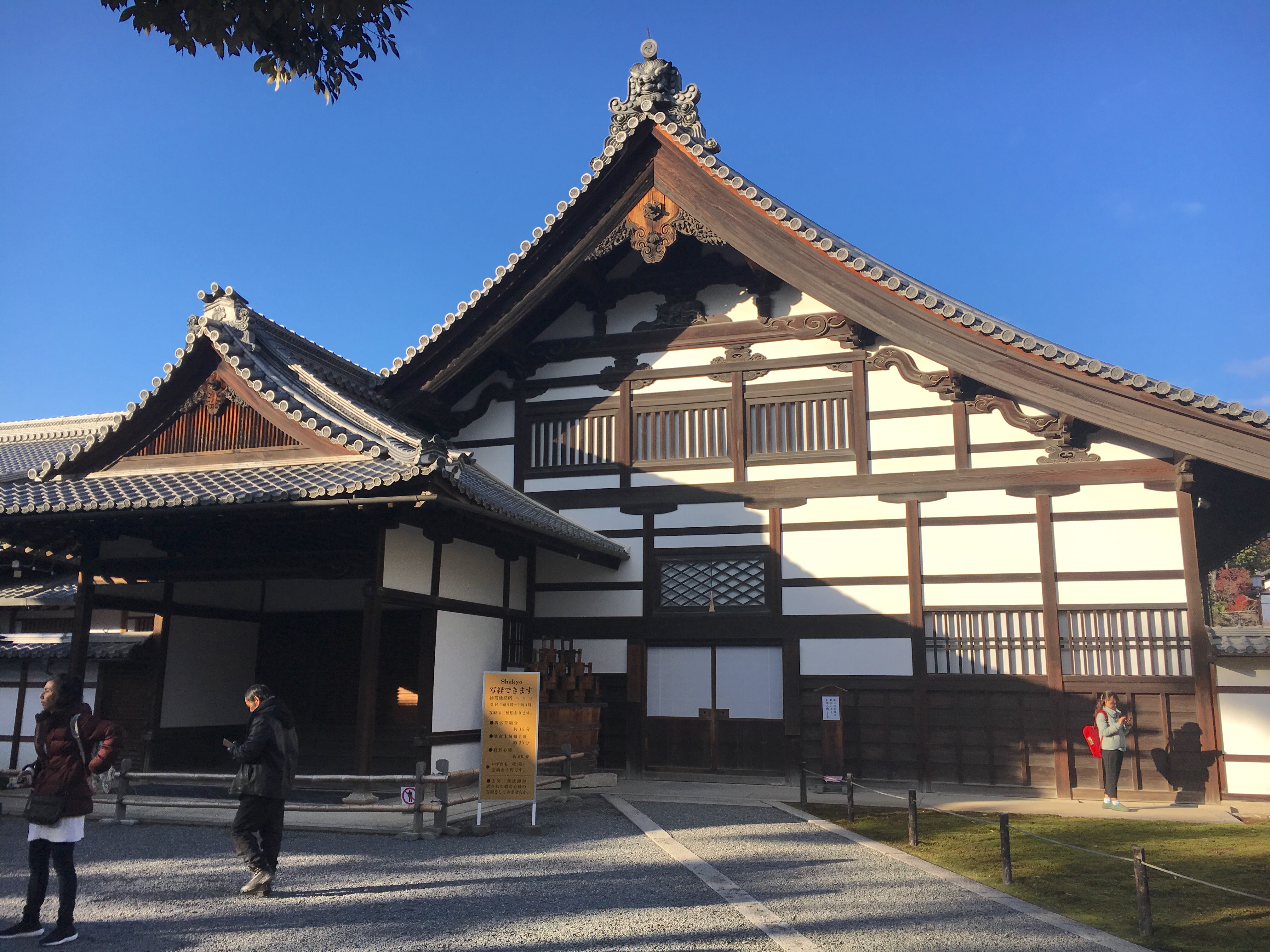
Up to this point, you have to pay to get in. The admission ticket to the Kinkaku-ji is special because it is an ofuda [お札] which is a kind of charm. Place it in either the south or east side of you home to receive good fortune. Do not puncture or pin it! Also keep it in a high place.
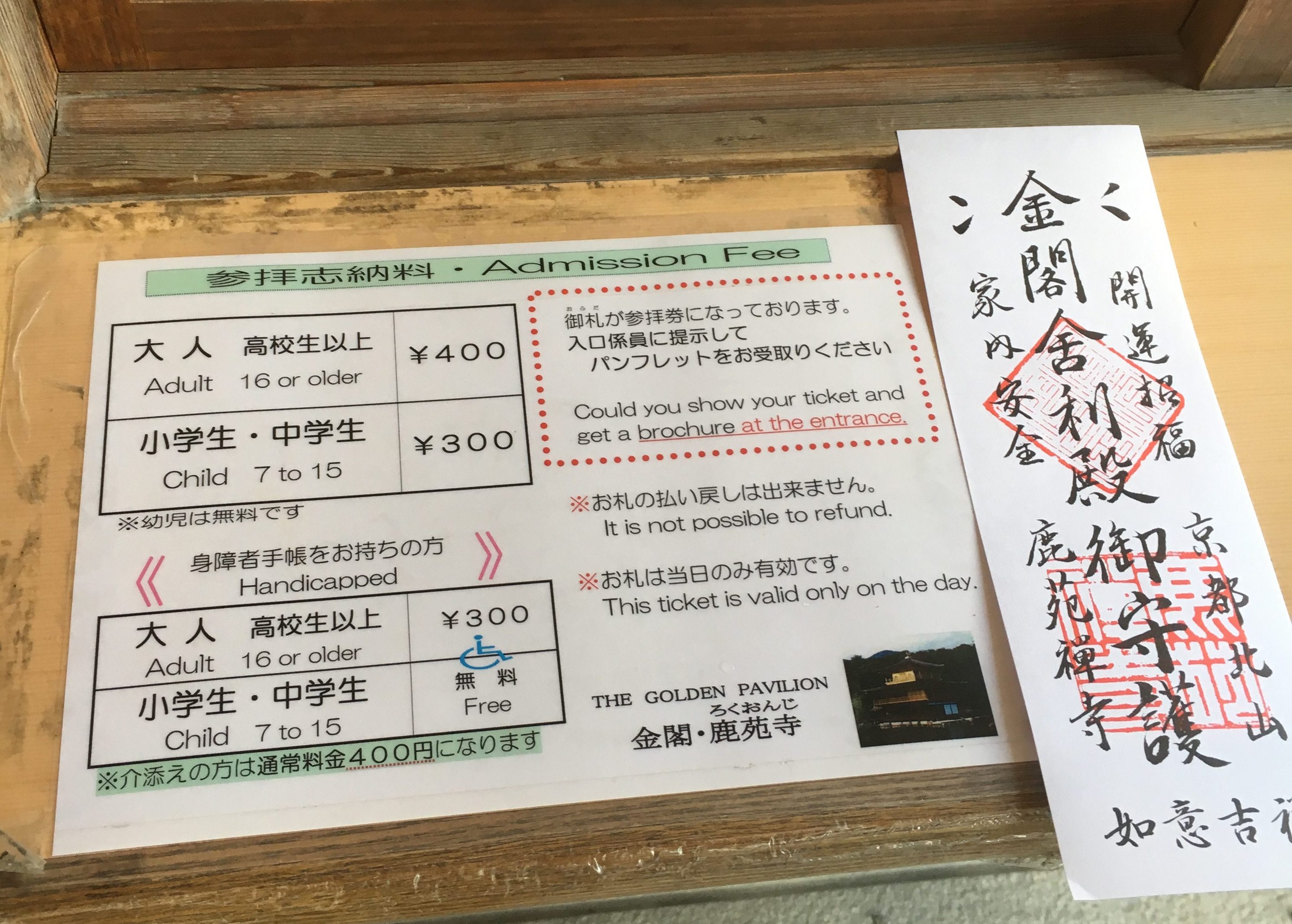
Once you pay and enter the temple gate, the main golden pavilion will be right in front of you.
The original gorgeous golden pavilion unfortunately, burnt down in 1950. Because the pavilion had to be rebuilt (1955) it is a world treasure, but not a national treasure. The Kinkaku-ji prior to 1955 was not the brilliant gold color that it is today. The gold leaf that once covered the building peeled off centuries before, so they decided to restore it to its former glory.
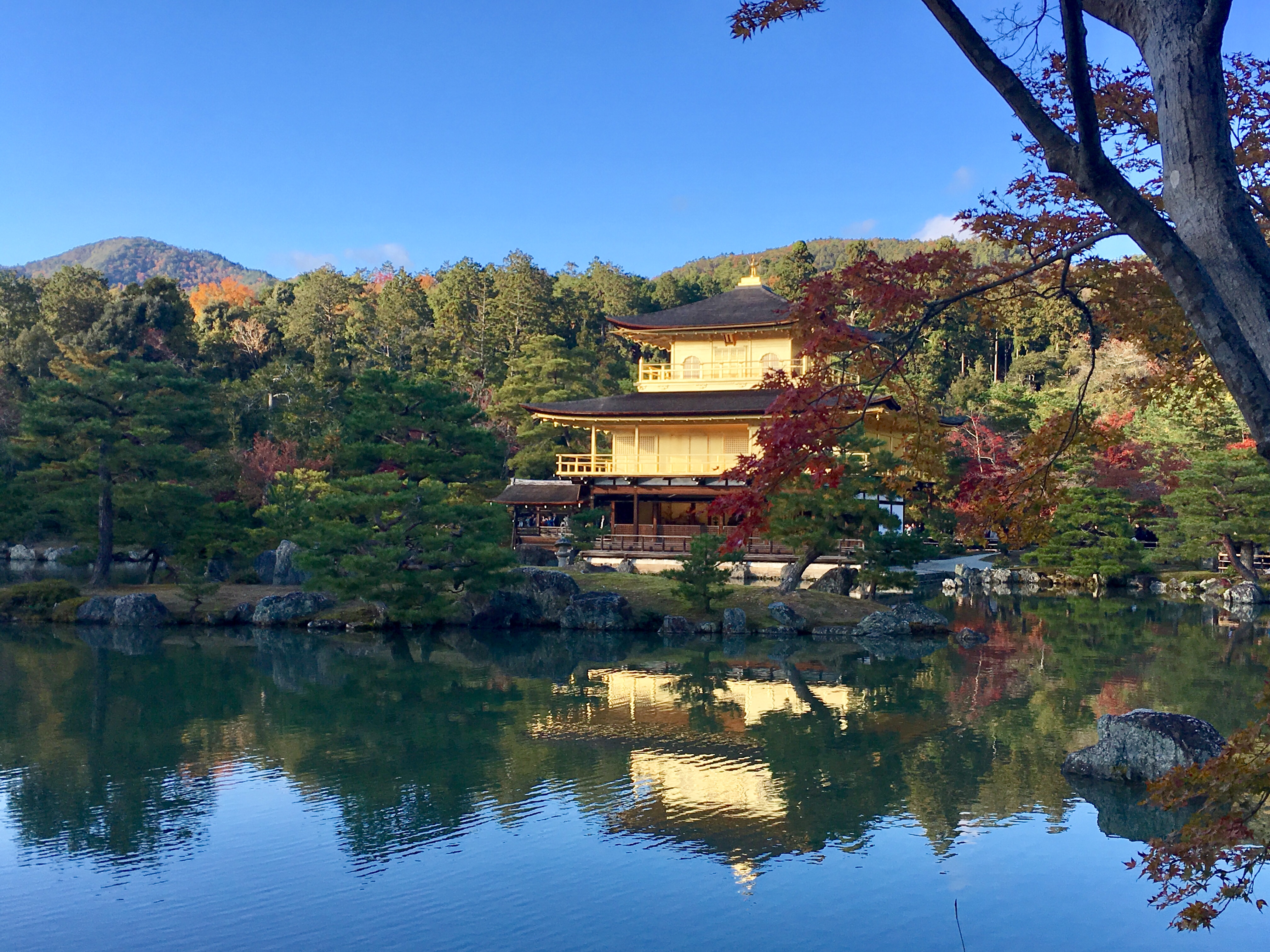
Though you cannot enter the pavilion itself, its architecture is very unique because it combines many different architectural styles that were common at that time. The first floor is the Hosui-in [放水院], and uses a style popular with Japanese aristocracts called Shinden-zukuri [寝殿造]. Notice that the first floor has no gold leaf. Second floor, the Choon-do [潮音洞], is done in the Buke-zukuri style[武家造]. This style was popular among Bushi clans. Only the outside of the Choon-do has gold leaf. The third floor, Kukkyo-cho [究竟頂], is Zenshu-yo style[禅宗様]. This style emerged just before the Muromachi Period and was common in Zen temples. This floor is completely covered with gold.
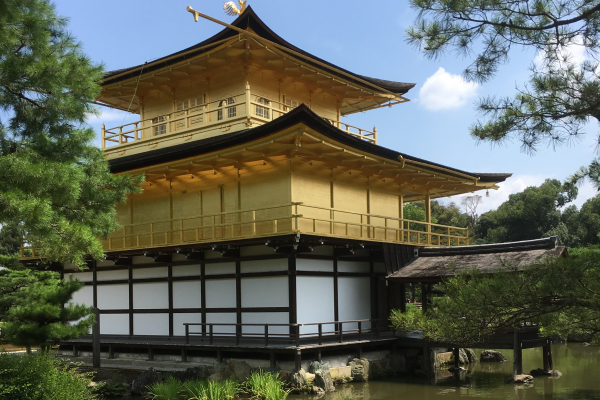
But why does the Kinkaku-ji have so many architectural styles? Historians assume that this was actually a hidden message. They think Yoshimitsu meant to say that aristocrats are lowest tier in society, followed the Bushi, and then finally the monks. Given that he was a monk that would place Yoshimitsu in the top tier.
During the fire in the 1950’s, the Kinkaku-ji phoenix was luckily offsite undergoing maintenance. Ever since the fire, and imitation has been used while Yoshimitsu’s original phoenix is safely stored in Shokoku-ji Temple.

There are so many things at the Kinkaku-ji than just the pavilion. For example, the the pond where the golden pavilion sits is called, kyoko-chi [鏡湖池]. Kyo means mirror because the pond reflects the pavilion just like a mirror. Also, look that the pond closely and you will notice there are several stones in it. These stones were sent by famous samurai and bushi who wished to earn Yoshimitsu’s favor.

Near the pavilion is a large building, Hojo. Not many people pay attention to this building, but this is Hojo, the main building of the temple. It was built in 1678 and contains a number of famous paintings. It only opens for special occasions.
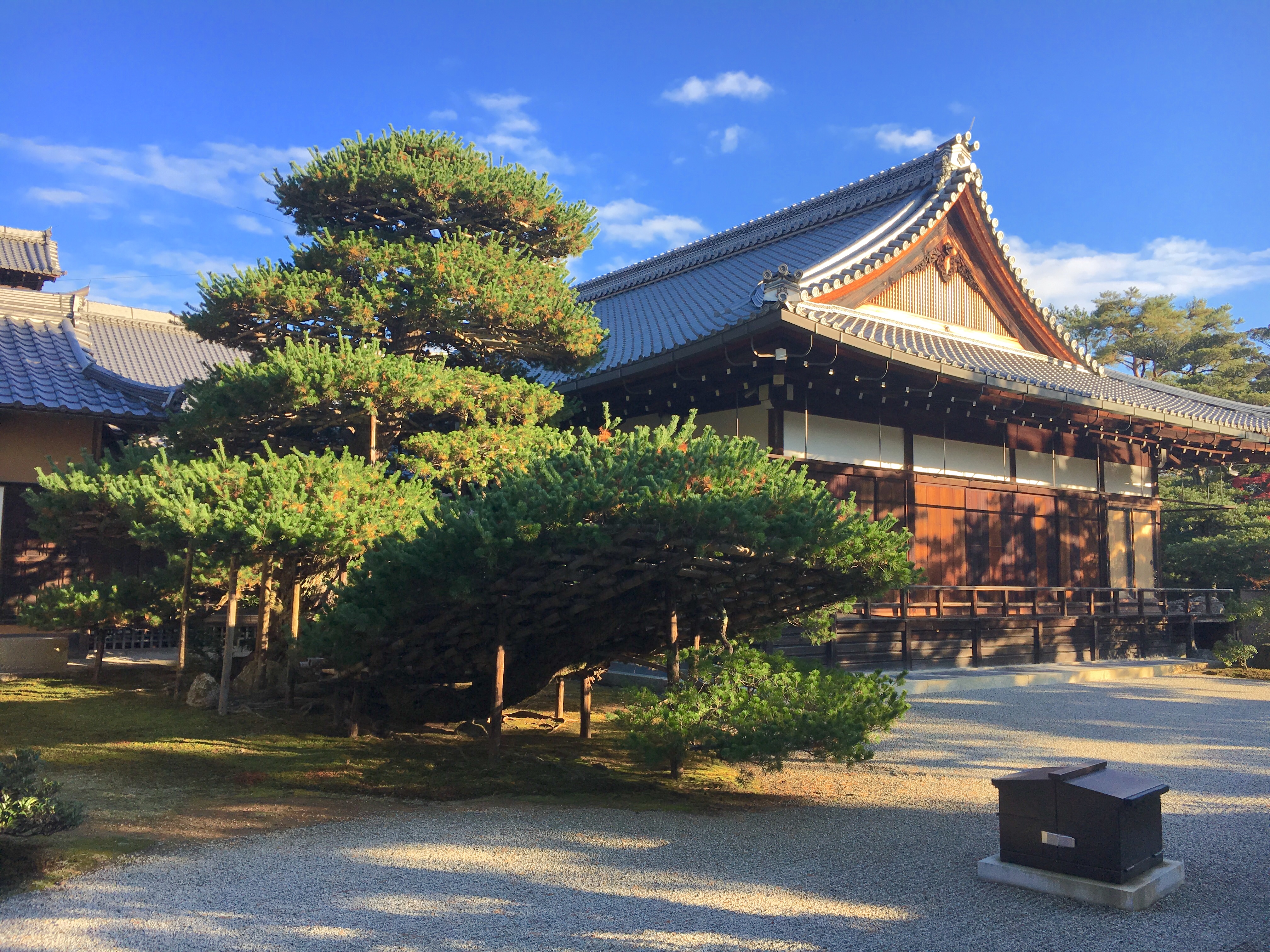
After the pavilion, you have to proceed on a fixed route simply because so many people come to visit the Kinkaku-ji. Honestly, this is a little sad, because there are many interesting things all over the temple. However, since there are so many, let’s just pick some of the most interesting spots.
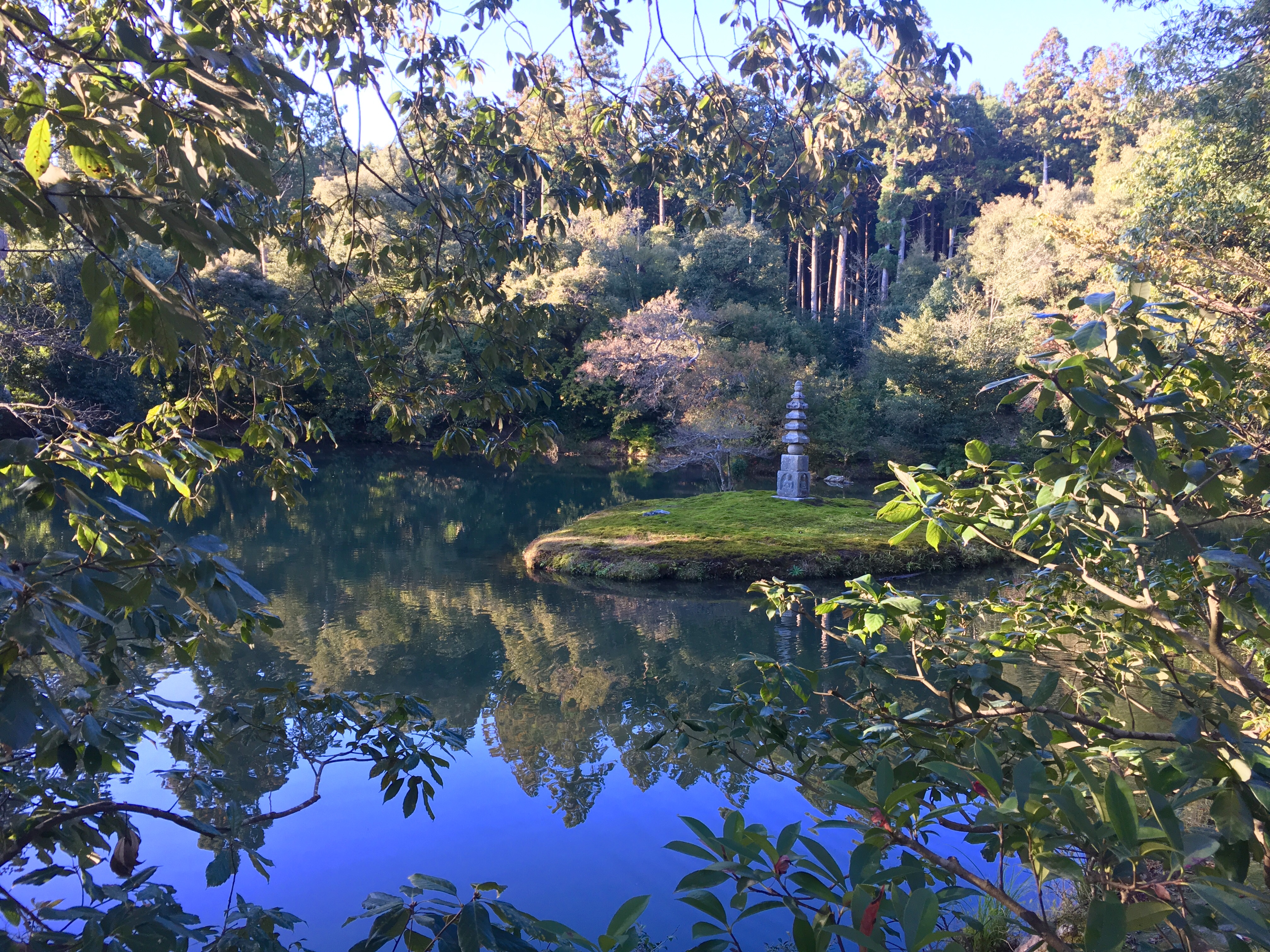
This waterfall is Gingasen. Yoshimitsu used the water from this waterfall for his tea ceremonies.


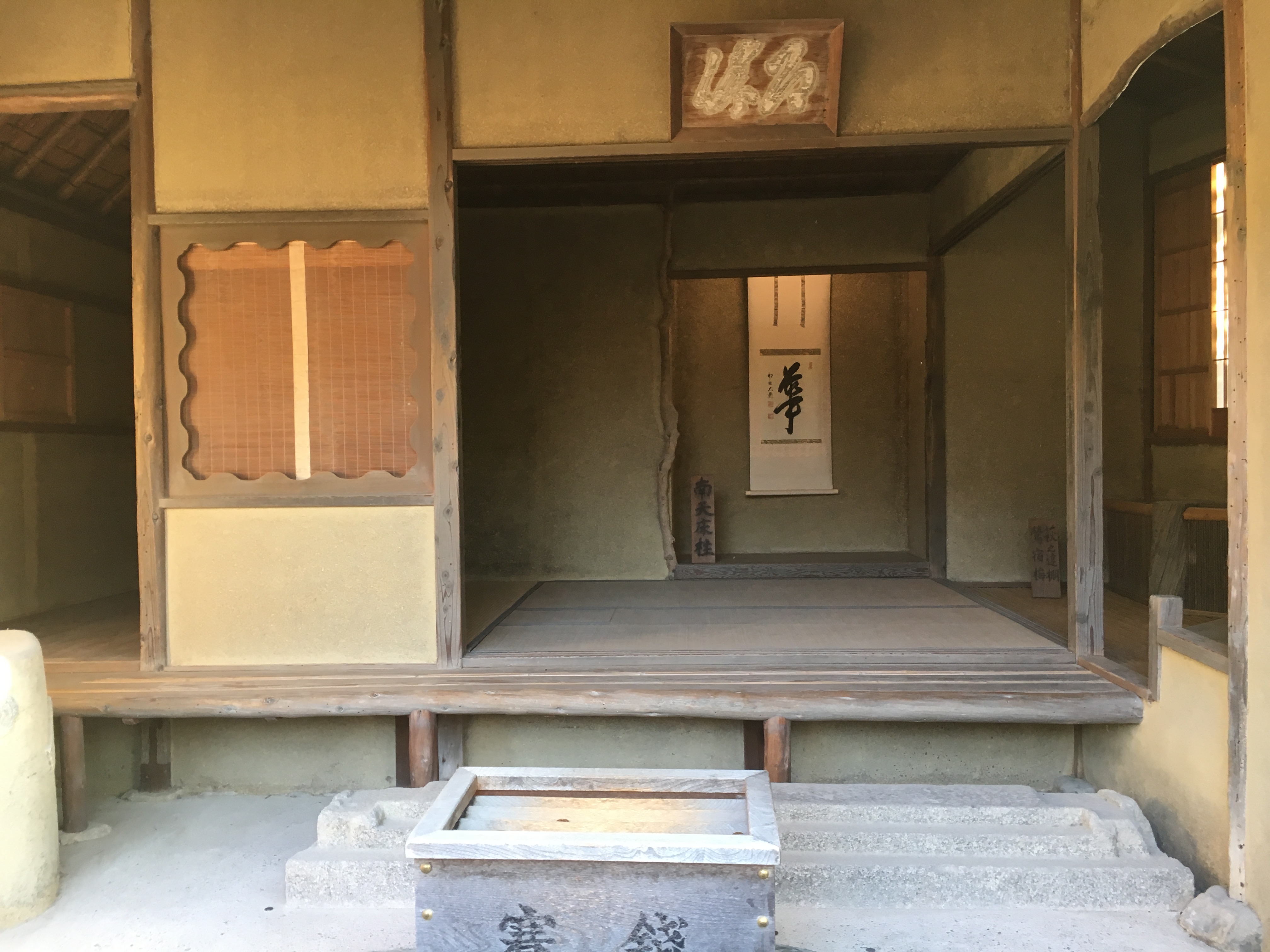
Near the exit is a building called Fudo-do. Built in the late 16th century, Fudo-do is the oldest structure in the entire temple. Inside is allegedly a stone statue of Buddha made by Kukai.
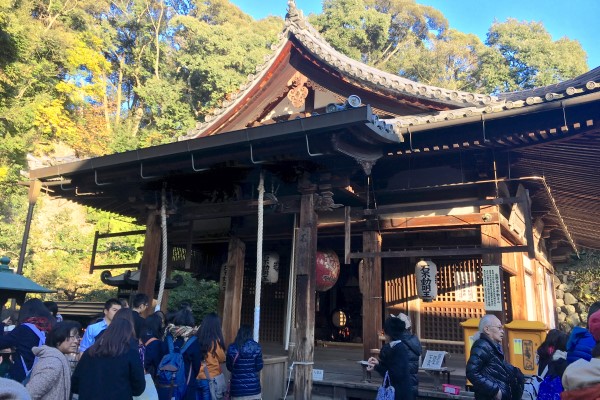
Information: Kinkaku-ji
| Address |
| 1 Kinkakujicho, Kita, Kyoto City,Kyoto Prefecture
|
| Website |
|
|
| Getting To |
| To get to the Kinkaku-ji the best thing to do is to take a bus. The bus is available from many stations and tourist spots. Don’t worry, there is plenty of bus service, so you probably won’t have to wait long but crowding can be a problem.
|
| Hours |
| 9:00-17:00
|
| Admission |
| 400 yen
|
| Note |
|
|
The Kinkaku-ji deserves a spot on your must-see list whenever you visit Japan. This scenic temple is without a doubt a showstopper and it is easy to understand why thousands and thousands of people flock to see it every year.
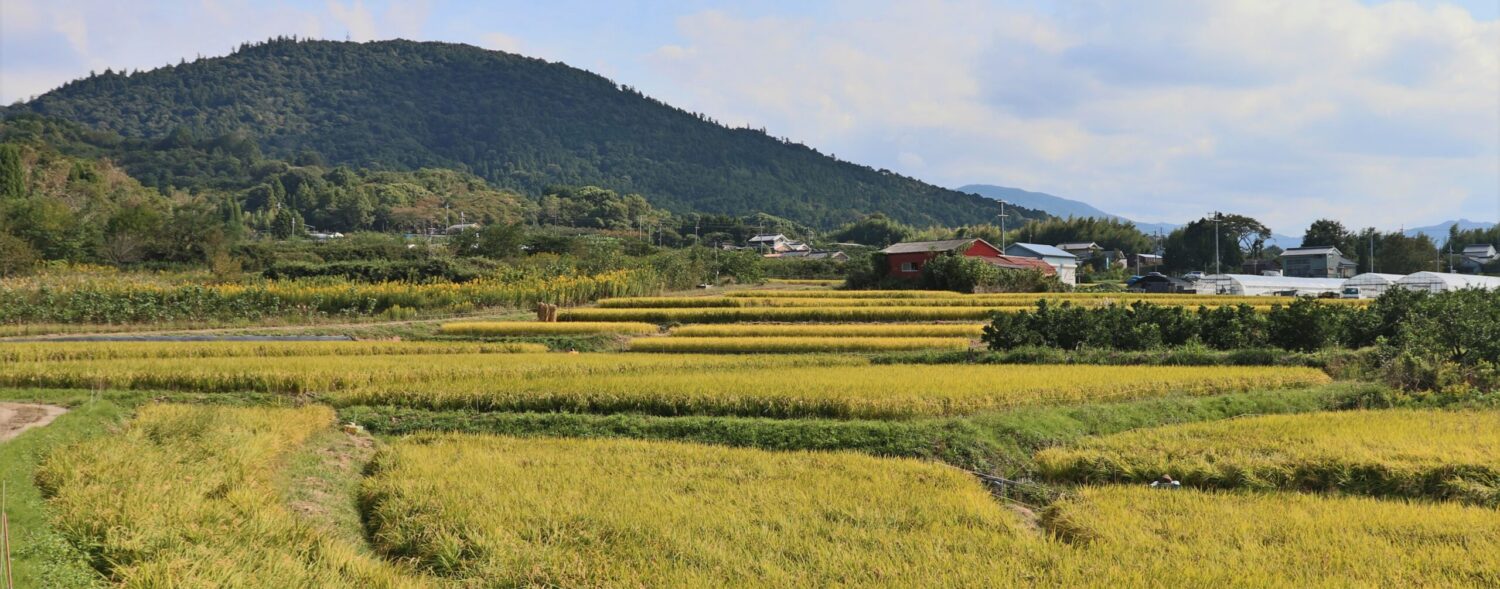
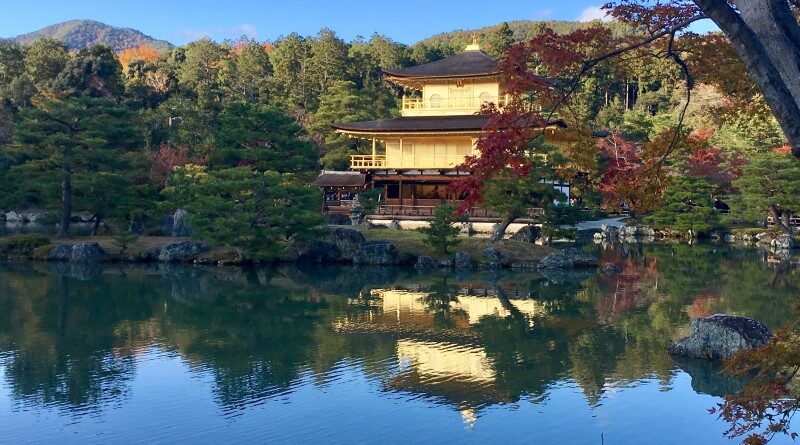
Leave a Reply